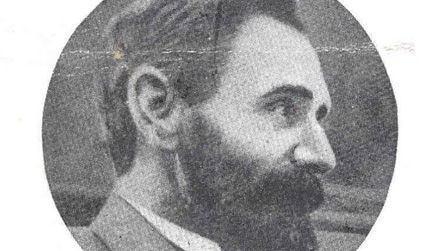Military Service (1916 - 1921) Pensions Collection
Courtroom drama: 1916 Court-martials and court case of Sir Roger Casement
“I went out to fight for Ireland’s freedom and it doesn’t matter what happens to me”
Themes: Internment,Executions,Female Participation Sub-themes:
Subject: History Language: English
Estimated Number of Classes: 2-3
Toolkit: Internet Connection,Computer Lab,Print Outs

Abstract:
This lesson plan will introduce students to the court proceedings that sealed the fate and shaped the future of men and women involved in the 1916 Easter Rising. T he lesson can also be used to cover the final days leading up to the executions of sixteen leaders of the 1916 Rising. T he lesson aims to teach students how to use and engage with primary sources for research purposes. The lesson will familiarise students with sources drawn from collections held in militaryarchives.ie and created by the letters1916 project. Students will examine primary sources to draw out the drama surrounding court proceedings and script their findings to produce either a dramatic piece of writing or a performance.
Lesson Aims/Objectives:
a. To engage students in analysis of primary source material
b. To familiarise students with a range of historical documents to inspire their script
c. To equip students with a better understanding of the immediate aftermath and the outcome for participants of the 1916 Easter Rising
Advanced Preparation Required:
a. Teacher should ensure that the Military Archives, Dictionary of Irish Biography and Archive.org websites are whitelisted
b. Teacher should read through the materials in preparation of the first class and to provide guidance when needed during the course of the lesson.
c. Teacher should choose whether to focus on the case of Sir Roger Casement, John ‘Jack’ Plunkett or Countess Markievicz (see Materials Needed 10. ‘a’)
i. If class time is limited: Countess Markievicz is the quickest and simplest case to focus on as just two sources need to be interrogated . The Casement case requires more time due to the volume of sources supplied and complexity of the case.
d. Teachers s hould arrange access to the digital sources for the chosen case, either via the internet or by organising printed resources.
Methodology:
a. Exercise one or homework
i. To provide context, the teacher should explain the collapse of the 1916 Easter Rising by focusing on the collapse of General Headquarters and the evacuation of the GPO (see Materials needed 10. ‘b. i’).
ii. Depending on the focus and case selection, biographical sketches of Countess Markievicz, Casement and Sir John Maxwell (General Commanding the forces in Ireland) can also be presented to the students (see Materials Needed 10. ‘b. ii’).
iii. For visuals, the Sinn Fein Rebellion handbook contains useful images of some of the personalities listed above (see Materials Needed 10. ‘b. iii’).
iv. Depending on the existing knowledge of the class this may take up the first class. If students have computer access at home, the contextualisation aspect of the lesson could be given as homework/a pre-production task and the links given in Materials needed 10. are given to the students.
b. Exercise two
i. The Teacher should divide the class into three groups comprising of a production team, dramatists and journalists who will also act as the audience.
ii. The journalists will be expected to write a journalistic report of thedramatisation and the production process and will act as critics for the finished productions, therefore it is important they observe the project throughout and have the opportunity to interrogate the chosen sources.
iii. The production team and dramatists will work together to write a script informed by the sources linked to a particular case and rehearse it
c. Exercise three
i. The students will present their dramatisation of the selected case for the journalists/critics.
ii. The critics deliver their initial review of the piece following which the students will discuss the exercise and wrap up
Assessment:
i. Students will be assessed on how well they contribute to the overall project and carry out their own individual roles
ii. The production teams and dramatists will be assessed on their understanding and appropriate use of the primary source material
iii. The journalists will be assessed on their reports and review - focusing on their discussion of how well the performance used the primary sources.
Materials Needed:
a. Contextualisation
i.An tOglach articles on the collapse of General Headquarters and the evacuation of the GPO
ii. Biographical sketches in the Dictionary of Irish Biography (available to all schools via Scoilnet and the Schools Broadband network)
- Countess Markievicz
- Sir Roger Casement
- Sir John Maxwell
iii.The Sinn Fein Rebellion handbook (pages 62-68)
b. Arrest and prosecution of Sir Roger Casement (Kerry/London)
i.CD 45/2/8 (Affidavit of Counsel for Defence, Gavan Duffy)
ii.CD 045/02/14 photographs of evidence produced (good for use as props or to inspire script)
iii.CD 045/2/5 pp.1-22 (statements by Witnesses for the prosecution from Curraghane and Ardfert Kerry)
iv.Witness statement account of the arrest of Sir Roger Casement -WS 349(pp.1-7)
v. The Sinn Fein Rebellion handbook (pages 128-150) on the capture, arrest and trial of Casement
vi. Documents which allude to Casement’s final days and hours
c. Court Martial of John ‘Jack’ Plunkett (brother of executed Leader, Joseph Plunkett, Son of Count George Plunkett)
d. Court Martial of Countess Markievicz
Funded/developed by
Developed by The Letters of 1916 Project, The Military Archives, An Foras Feasa and The Humanities Institute at Maynooth University. Funded by the Department of Education and Skills and the Irish Research Council.
 <200b>img-responsive">
<200b>img-responsive"> <200b>img-responsive pull-right">
<200b>img-responsive pull-right">

